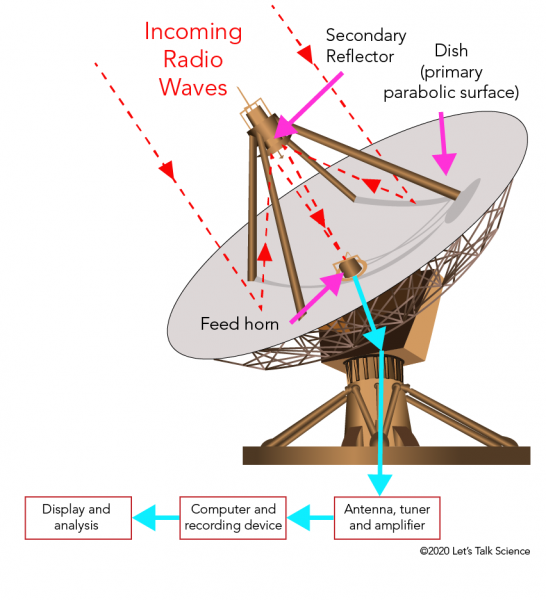

Radio waves are a form of electromagnetic radiation that exists outside the visible spectrum. We cannot see or hear radio waves; we have to use electronic equipment to pick them up.
Radio telescopes share many similarities to the reflecting telescopes mentioned in Visible and Infrared. A concave mirror (called the dish) directs incoming radio waves into a secondary mirror, which focuses the radio waves into the feed horn. This is where radio telescopes and visible-light telescopes begin to differ. The radio waves go through the feed horn and create a weak current in the antenna, which is amplified in a radio receiver before it is finally processed by a computer and recorded on a magnetic disk for further research and analysis.

Due to the size of radio waves, even the largest radio dishes in the world, acting on their own, have worse resolution than a typical small visible-light telescope used in a college astronomy lab. In order to increase the resolution in radio images, radio astronomers can electronically link two or more telescopes together to create what's called an Interferometer.
For even better resolution, astronomers combine a large number of radio dishes into an interferometer array. Initially, the size of interferometer arrays was limited by the fact that all of the dishes had to be physically wired together. However, with current technology and computing power, astronomers can precisely time the arrival of electromagnetic waves and recombine data later. Data can be combined from telescopes far away (e.g., California and Australia) to create images with resolutions surpassing those of visible-light telescopes.
Other sources used besides assigned reading: